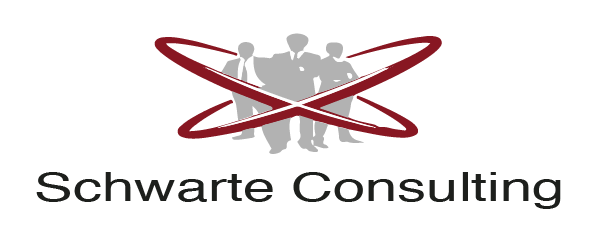[3][4], Also, Henry Ford was cantankerous and rigid in his ways. No.2, Ziyou St., Tucheng Dist., New Taipei City 236, Taiwan +886-2-2268-3466 There was no sequence or orderly flow of materials, no sense of forward motion, no reliance on machined parts, he said. The housing shortage Sorensen complained about arose from his choice of a sparsely populated rural setting 30 miles west of Detroits labor poolan island in Michigan mud, as one writer viewed it. Despite how smoothly the plant ran, putting out a bomber an hour still wasn't an easy feat. Overstocked with B-24s, the Air Force already had canceled contracts with Douglas Aircraft and North American Aviation and would terminate Consolidated Fort Worth by years end. The team developed the B-24's build sequence from these divisions. It sat 35 miles west of Detroit, at a site without existing highway or streetcar connections. Despite intensive design efforts led by Ford production executive Charles E. Sorensen,[30] the opening of the plant still saw some mismanagement and bungling, and quality was uneven for some time. ", 1960 Chevrolet Corvair Sales Brochure, "The Prestige Car in Its Class". Willow Run Bomber Plant IPMS - USA. Media coverage hyped by Ford and military publicists wove extravagant tales of a mammoth industrial citadel where 100,000 dedicated workers would produce hundreds of Liberators each week to roar across the oceans and obliterate enemy sources and seats of power. The influx of workers for the massive war . Because of the many structural changes required to accommodate the nose turret, the first B-24Hs were delivered slightly behind schedule, with the first machines rolling off the production lines at Ford in late June 1943. Like virtually all of the United States' industrial concerns, Ford Motor Company, by this time under the direction of Henry Ford's only son Edsel, directed its manufacturing output during World War II to Allied war production. After nearly a year of work, the cost to keep the plant shuttered and standing is $7 million annually. Lewis, charged with dismantling the facility, has found it's taken more detective work than he thought to shut the plant down. No one had ever manufactured airplanes on such a scale before. Yankee was originally granted until August 2013 (deadline was later extended) to raise the funds needed to purchase and separate a portion of the approximately 5,000,000 sq. Rosemary was among 200,000 southerners who flocked to southeastern Michigan for factory jobs, including 9,500 employed at Willow Run. But no project captured the public's imagination like Willow Run, where Ford Motor Company built one B-24 Liberator airplane every 63 minutes. Considerable water was furnished to the Willow Run bomber plant from the Ypsilanti public-supply system during the period from August 1941 through March 1943. [6] In April 2013, a redevelopment manager for the RACER Trust said unused portions of the powertrain plant would likely be razed as a step toward redeveloping the property. When Germany surrendered on May 7, 1945, only 7,400 employees remained on the Willow Run payroll. B-24 Liberators line the airfield at Willow Run Airport in this June 1945 photo. The skilled women who accomplished this work -- at Willow Run and elsewhere -- inspired the symbolic "Rosie the Riveter" character. This website requires certain cookies to work and uses other cookies to help you have the best experience. Thursday May 4th, 2023. ft. building, which later became the GM Powertrain facility. Perhaps the most impressive breakthrough at Willow Run was Ford's technique for assembling the B-24's center wing section. [11], Later in 1953, after a fire on August 12 destroyed General Motors' Detroit Transmission factory in Livonia, Michigan, the Willow Run complex was first leased and then later sold to GM. In some places, the bulbs had been simply painted over and left in their sockets as GM quickly re-tooled assembly lines. Apart from a new tail turret, the B-24M differed little from the B-24L. Because of production delays encountered at Willow Run as a result of the inevitable difficulties and snags involved in the adaptation of automobile manufacturing techniques to aircraft, the B-24Es produced at Willow Run were, generally, obsolete by the time that it began to roll off the production lines, and most were relegated to training roles in the United States and hence few ever saw combat. A typical month saw as many workers quit as were hired, and 8,200 more were drafted into military service. Labor shortages made women essential to war industries, and the government actively recruited them to join the workforce. Ford Motor Company had reinvented the concept with the Model T's moving assembly line. The Ford Motor Company's Willow Run Bomber Plant began production in 1942 and continued until June 28, 1945. Enjoy the latest news from The Henry Ford, special offers, and more. Willow Run bomber plant. The two sides reached an accommodation during the first quarter of 1943. Named "Lily's Pad",[53] the break spot was equipped with posters that catered to the male fantasy, an air conditioning unit, rope lights, a TV and a list of restaurant takeout phone numbers. This populated place also has portions in an adjacent county or counties, Sociological study on Willow Run housing crisis, Army Air Forces support and post-production activities, Liberator variants produced at Willow Run, Redevelopment efforts and the Yankee Air Museum. Easements were acquired from landowners across the county line in Ypsilanti Township where the Liberator plant (and eventually the airport terminal) would be built. [3][41], The B-24M was the last large-scale production variant of the Liberator. In addition, Henry Ford refused on principle to hire women. [48] On October 26, 2013, RACER Trust and the Yankee Air Museum again reached a third, and final, deadline extension agreement that gave Yankee until May 1, 2014, to raise the $8 million estimated as necessary to secure, enclose and preserve a portion of the original Willow Run plant for the Yankee Air Museum. The option to Walbridge has since lapsed and the property remains available for purchase and redevelopment. [51], Michigan Live reporter Amy Biolchini toured the empty Willow Run facility in early 2013, observing:[52]. [36][37], While the planes were being serviced and made ready for overseas movement, personnel for these planes were also being processed. GM first built transmissions at the plant, and later automobiles including Chevrolet's Corvair and Nova models. AskUs", "Oral History Interview with John W. Snyder", "Ford May Convert Willow Run Into Huge Tractor Plant", "History of the original Willow Run Village", "They may save our honor, our hopesand our necks", AFHRA Document 00155775 1 Concentration Command History, AFHRA Document 00150138 AAFTC Technical Training Command, "Tucson International Airport's Historic Hangars", "History of the Willow Run Plant, Part 3", "Preservation group gets extension to raise money for historic Willow Run factory", "Willow Run bomber plant preservationists get more time to reach goal", "Yankee Air Museum signs deal for part of Willow Run Bomber Plant", "YPSILANTI TOWNSHIP: RACER Trust reaches demolition, development agreements for Willow Run plant", "Death of a factory: inside the Willow Run GM Powertrain plant for the last time", "Willow Run assembly plant demolition proceeding", "A Future NEW Home for the Yankee Air Museum", Detroit Edison Company Willis Avenue Station, Michigan Bell and Western Electric Warehouse, Piquette Avenue Industrial Historic District, Frederic M. Sibley Lumber Company Office Building, List of Registered Historic Places in Michigan, https://en.wikipedia.org/w/index.php?title=Willow_Run&oldid=1134554587, Defunct aircraft manufacturers of the United States, Motor vehicle assembly plants in Michigan, United States home front during World War II, Michigan State Historic Sites in Washtenaw County, Michigan, Defunct manufacturing companies based in Michigan, Articles with dead external links from September 2020, Short description is different from Wikidata, Infobox mapframe without OSM relation ID on Wikidata, Creative Commons Attribution-ShareAlike License 3.0, military draft each month 8,200 workers drafted into military service, school the Aircraft Apprentice School had up to 8,000 students per week completed training and reported for work, dimensions More than 3,200 feet long and 1,279 feet across at its widest point, subassemblies parts production and subassemblies at almost 1,000 Ford factories and independent suppliers, This page was last edited on 19 January 2023, at 07:10. Equities Group Holdings offered to buy the former Powertrain plant from the RACER Trust. "Decommissioning the plant is not an easy task. Managing the utilities and slowly shutting them off has been Lewis' biggest challenge, as the building is hard-pressed to give up its secrets. [8], Coordinates: 421428N 833304W / 42.241N 83.551W / 42.241; -83.551. The first Ford-built Liberator rolled off the Willow Run line in September 1942; the first series of Willow Run Liberators was the B-24E. The largest of these hangars could house 20 B-24s at once, and included a control tower, a cafe, and a hotel. The Willow Run Plant had many initial startup problems, due primarily to the fact that Ford employees were used to automobile mass production and found it difficult to adapt these techniques to aircraft . Thought to be overly ambitious in its scope, the plant hoped to boost bomber production from one aircraft per day to one plane per hour. On the other side of the airport from the assembly plant were a group of World War II hangars, which were sold to the University of Michigan in 1946. Specialized employees -- riveters, for example -- received training in these classrooms as well. Ford president Edsel Ford and his team explained the difficulties with design changes. Access the "best of" at The Henry Ford and other great visit planning resources. The factory prompted the creation of the Washtenaw County Health Department and was a key part of America's "arsenal of . Ultimately, more than seven million square feet of floor space were completed for B-24 production at Willow Run. Construction on the Willow Run Bomber Plant began that spring and it soon became the largest factory under one roof in the world. Four engines powered the aircraft, and together its two bomb bays could carry up to 8,000 pounds of explosives. Willow Run takes its name from a small tributary of the Huron River that meandered through pastureland fields and woodland along the WayneWashtenaw county line until the late 1930s. those represent the end of the plant. Kaiser also built two C-123 Provider airframes at Willow Run, which were scrapped before delivery, as a procurement scandal involving the company put an end to any chance for future Air Force contracts. After the war, these residences served students attending the nearby University of Michigan on the G.I. The War Department pitched in with funds for the Detroit Industrial Expressway, linking the city to the plant. The war's focus was shifting from Europe to Japan, where more-advanced B-29 bombers were needed. The Willow Run bomber plant made aviation, industrial and social historyalong with new B-24s by the hour. Over the years, GM expanded the bomber plant by roughly half, into a nearly 5,000,000 square feet (460,000m2) GM Powertrain factory and engineering center. [15] Ford Motor was to have first option on the plant after war production ended, an option it ultimately chose not to exercise, although a rumor in Drew Pearson's syndicated column had Ford planning a postwar use as a tractor factory,[16] but that never came to pass. 8,685 B-24's were built in Willow Run bomber plant (Story of Willow Run, p.70). More than 18,000 were built. By the end of the war, Ford had pushed 8,865 B-24 heavy bombers out the Willow Run doors for the Army . In 1972, the University spun off WRL into the Environmental Research Institute of Michigan, which eventually left Willow Run for offices in Ann Arbor. Efforts to desegregate Willow Run Lodge and Village and build additional integrated housing were rebuffed by the Detroit Housing Commission and the National Housing Agency,[25] so noted African-American architect Hilyard Robinson was contracted to design an 80-unit community. A technological marvel for a new age of aerial warfare, the B-24 was now obsolete. Labor shortages made women essential to war industries, and the government actively recruited them to join the workforce. Join Ernst Neumayr, Channel Development Manager from Universal Robots, and Jeremy Crockett, Business Manager for Automation from Atlas Copco, and discover how cobots can build your business and increase productivity in your manufacturing facility without multiplying the complexity of your processes! Over the course of the war, the hospital handled more than two million medical cases. Rivet gun operator Rosemary Will from Pulaski County, KY, appeared in a Ford promotional film, personifying thousands of women in the nations defense industry, collectively known as Rosie the Riveter. Baseball games at the on-site recreation field took away some of the strain during off-duty hours. those hangar doors represent the end of the plant, the end of the assembly line where 8700 b-24s rolled out. Those who stayed hunkered down in tarpaper shacks, tents, garages, and beat-up trailers and jalopies. Like many successful technology companies, LITEON outgrew the garage to become a leader of its chosen industry through years of hard work. The president and his advisers were convinced that long-range, high-altitude heavy bombers would be the decisive weapon in a war dominated by air power and industrial muscle. Sadly, one of the people most responsible for Willow Run's success did not live to see it. Public bus lines offered 35 daily trips from Detroit, while private carriers offered 130. To their dismay they discovered that engineering drawings for the big bomber were uselessincomplete and filled with discrepancies and unfamiliar signs and symbols. When Cherry Hill outgrew the little chapel and decided to build a new church, it sold the chapel to the Belleville Presbyterian Church for one dollar in July 1978. plant, each paid the same 85 cents an hour as their The first Ford-built Liberator rolled off the Willow Run line in September 1942; the first series of Willow Run Liberators was the B-24E. However, in October 1941, Ford received permission from Consolidated and the Army to assemble complete Liberators on its own at its new Willow Run facility. Transportation history for an electronic age is underway at Willow Run at the American Center for Mobility, where carmakers, suppliers and high-technology companies have banded together to research, develop and test driverless cars that communicate with one another and with traffic signals to avoid accidents and adjust traffic flow. After Kaiser left, General Motors leased and then purchased Willow Run. By mid-1944, the Willow Run assembly plant was producing one B-24 per houraccounting for half of all B-24s assembled that year. GMAD required 16 years to completely absorb Fisher Body's operations, and Fisher would manufacture bodies at Willow Run Assembly until the 1970s; vehicles would roll off the line there until 1992. Every American automaker turned its workforce and facilities to military production during World War II. ", Willow Run Bomber Plant Manual, 1943-1944, 1947 Kaiser-Frazer Advertisement, "One Every Minute is Not Enough! Remote assembly proved problematic, however, and by October 1941 Ford received permission to produce complete Liberators. From historic images to vivid descriptions, a record of rich detail is bundled inside a single card. The residents of the Willow Run Camp planted, tended, and harvested field crops and collected maple syrup, selling their products at the farm market on the property. Since the 2010 closure of Willow Run Transmission, the factory complex has been managed by the RACER Trust, which controls the properties of the former General Motors. for half of all B-24s assembled that year. Early example of Lean. The Air Force dictated more performance and safety upgrades for B-24s than any other American warplane. Their shopping list included 12,000 of these aerial battleships to attack Germanys heartland, hammering military installations, bridges, factories, rail yards, fuel storage tanks and communications centers. This was done at Willow Run by 1st Concentration Command (1st CC). [21], In addition to the Willow Run Lodge and Village housing projects, another community named Parkridge Homes was also built in 1943 to house African-American Willow Run employees. An unknown number dwelt in the memories of plant foremen. Charles Sorensen's brash "one plane every hour" claim was no longer an empty boast. In addition to making automatic transmissions, Willow Run Transmission also produced the M16A1 rifle and the M39A1 20mm autocannon for the US military during the Vietnam War. When . we intend to save that. "A Historical Perspective.". Cast Iron Charlie had two Liberators flown to Dearborn where they were dismantled piece by piece. Years later, that stretch would become a section of I-94. Unlike menacing B-24 Liberators that took off from the same spot, these silent vehicles are on a mission to save lives and prevent destruction. Production steadily increased, reaching the magical plane-per-hour pinnacle in mid-1944 while accounting for half of all B-24s assembled that year. [1] Construction of the Willow Run Bomber Plant began in 1940[2] and was completed in 1942. With the pressures of wartime production schedules -- and the sense that victory itself depended on their efforts -- Willow Run's employees needed occasional relief from their burdens. Paper (Fiber product) The salvaged Hydramatic transmission tooling and machinery relocated to Willow Run and were back in production just nine weeks after the fire.[43]. Part of the airport complex operated at various times as a research facility affiliated with the University of Michigan, and as a secondary United States Air Force Installation. [3][4] Willow Run's Liberator assembly line ran until May 1945, building almost half of all the Liberators produced. The B-24 Liberator was a prolific bomber that was operated by multiple branches of the United States military as well as other Allied forces in the European and Pacific . The building is currently being used to house and protect of the Museum's large aircraft .
Reflexion De La Lectura Lucas 13 10 17,
Elegant Dresses For Wedding Guests,
Best Women's Flannel Robe,
Articles W





